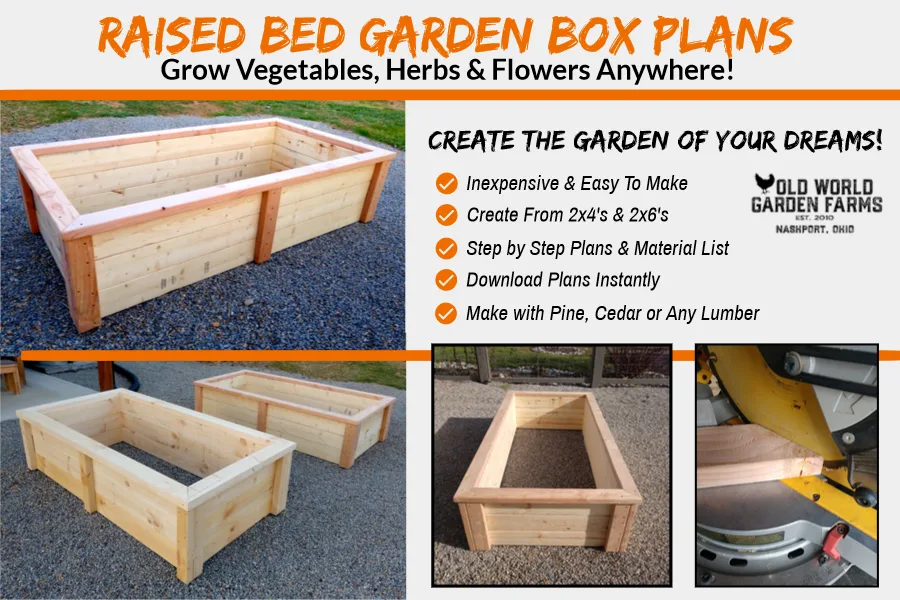Re-energizing your raised bed soil each and every year is one of the most important tasks you can perform to bring life back to your soil – and keep the plants you grow inside of them strong, healthy and productive. And the best part of all – it’s so easy to do!
Raised beds are an incredible growing method for so many gardeners. Because they can be placed nearly anywhere, they are the perfect choice for those with limited yard space. And with their elevated design, they can also make it easier for those with physical limitations to still enjoy gardening.
But perhaps best of all, raised beds help reduce the typical workload found in a traditional garden. In fact, many of the most difficult of gardening chores – such as planting, weeding, watering and harvesting are far easier to perform in raised beds than in a traditional garden setting.
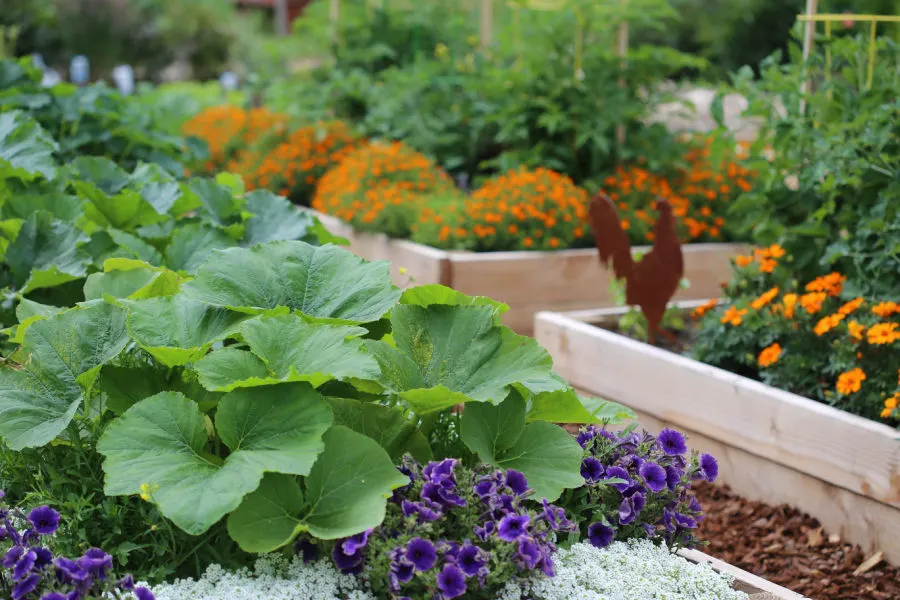
But with all the advantages raised bed gardening brings, there is one unique challenge to the method that requires annual attention. And that challenge? How to keep the soil within the beds full of nutrients year after year.
Replenishing Nutrients In The Soil
Vegetables, flowers and herbs take nutrients from the soil as they grow. They need a fair amount of energy to develop strong roots, stems and foliage. And they need even more power to produce blooms, flowers, fruit and vegetables.
Unfortunately, raised beds have no ability to replenish those nutrients on their own. Much as with plants growing in hanging baskets or containers, they have only what is within their confined space. Because of this, as plants use the nutrients up, the soil can become quite sterile and lifeless.
The power and energy in raised bed soil can fade away quickly. In fact, depending on the plant varieties you are growing, nutrients can disappear in just a single growing season.
As the nutrients are taken out of the soil, the structure of the soil weakens as well. Over time, it becomes more and more lifeless. In addition, as it weakens, it also loses its ability to hold moisture. And if all of that wasn’t bad enough, stale, tired soil becomes an inviting home for pests and disease to take hold too.
As all of these issues begin to pile up, it is the plants that ultimately suffer the most. Without nutrients, they will simply grow less, produce less, and have more issues with disease and pests. And that is exactly why you need to power that soil up before planting!

Re-Energizing Raised Bed Soil – How To Bring Life Back To Your Soil
The good news is that by simply adding just a few key life-giving ingredients each and every growing season, you can keep your beds healthy and productive. In fact, you can actually make them more productive than ever before!
With that in mind, here are five great methods for getting your soil re-energized and charged up for big growth. By simply using one or more, you can have your beds teeming with power in a flash.
Adding Compost – Re-Energizing Raised Bed Soil
Nothing adds more power and life to your tired soil faster than compost. For starters, it is full of nutrients, microbes and organisms. All of which can easily be absorbed by the roots of plants when mixed into the soil.
But compost does so much more than simply add nutrients. It also helps to loosen the soil for better, stronger and faster root growth. And if that wasn’t enough, it absorbs its weight in water multiple times over. That means your plants can have the moisture they need on hand right when they need it most!
How much compost should you add? The short answer is as much as you can fit in! Even if that means removing some of the old soil as you do. A good rule of thumb is to replace or add 15 to 20% of compost to the existing soil in a raised bed. That is more than enough to help recharge tired soils.
Listen In To Our Podcast On Recharging Your Raised Beds!
If you do need to remove a bit of the old soil to add compost, take it straight to your compost pile. Not only will it add organic matter to the pile, the old soil will recharge quickly when mixed in with the fresh compost. See: How To Make Compost Fast!
Adding Organic Material – Re-Energizing Raised Bed Soil
Adding shredded leaves and/or grass clippings to your soil are also excellent methods for helping to add nutrients and build better soil structure. Even better, they are both entirely free to obtain!
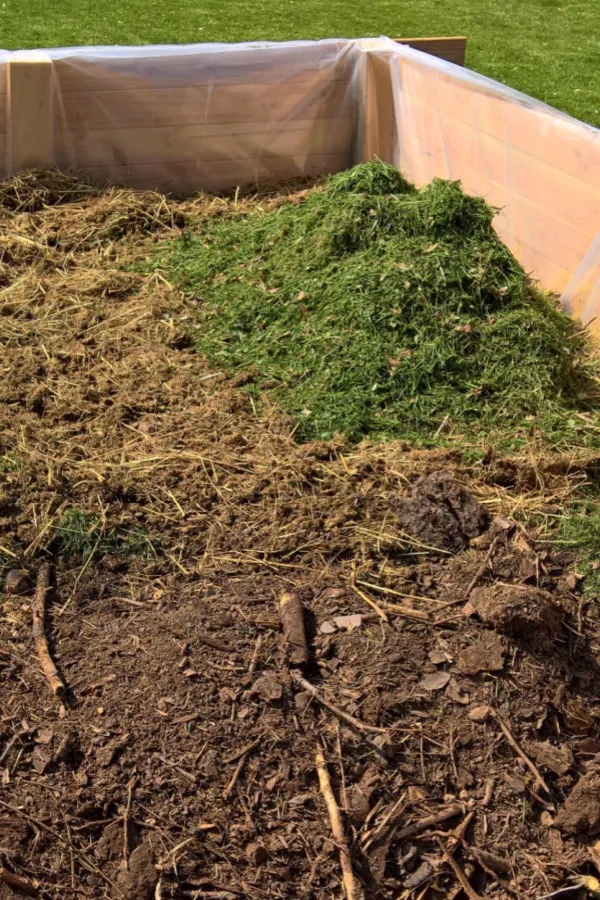
Finely shredded leaves break down quickly, giving their energy back to the soil they decompose in. Use a push or riding mower to shred up leaves and then work a few inches of them into the upper six inches of your raised bed soil.
Grass clipping are wonderful too, and since they are already cut finely, they break down fast as well. Both shredded leaves and grass clippings are also perfect for using as a mulch through the growing season. They protect plants, repel weeds, hold in moisture – and add more nutrients as they slowly decompose.
Adding Aged Manure – Re-Energizing Raised Bed Soil
Chicken, rabbit, cow, goat and horse manure are among the best animal manures to use for raised beds. They are full of the nutrients plants love most. They also happen to be by fairly common and easy to find. Especially if you are lucky enough to have a backyard chicken coop!
Manure has to be added with a bit of caution. The best way to add it into your beds is in early spring or late fall. This will allow it enough time to break down before planting. Add a few inches on top top, and then work in with a shovel or rake.
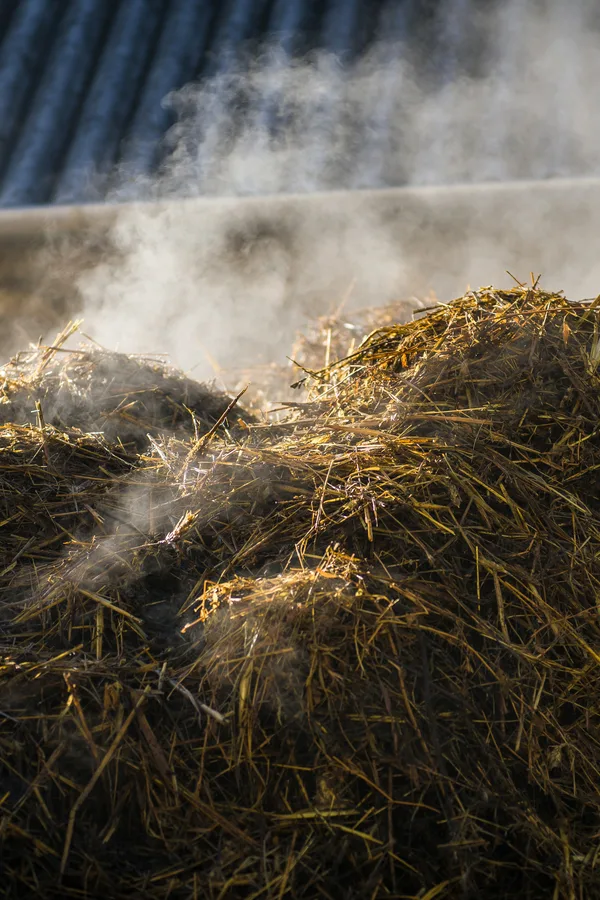
It is important to use dry, aged manure and not fresh. Fresh manure is too hot and can easily burn the roots of plants. A fall layer will have plenty of time to break down by spring. If applying in the spring, put it on at least 8 weeks before planting to allow it to work in and be safe for planting.
Adding Perlite To Soil – Re-Energizing Raised Bed Soil
Perlite is one ingredient that you might not think of adding to raised beds, but can it ever help to create healthier, more productive beds! Although this popcorn-like material is often used to lighten and aerate potting soils, it is also excellent for mixing into raised beds.
Perlite is all natural and 100% organic. When added to raised beds, it helps the soil from compacting. In the process, it creates air channels for water and nutrients to find their way to the roots of plants. Product Link: Perlite 8qt. Bag
As for how much to add, a good rule of thumb is to add a handful of perlite for every square foot of soil space. A 5 gallon bucket of perlite is perfect for a typical 3′ x 6′ raised bed space. Best of all with perlite, it stays in the soil to keep it light and compact-free for good!
Plant A Green Manure / Cover Crop – Re-Energizing Raised Bed Soil
Planting a fall cover crop or an early spring green manure cover crop is a simple and powerful way to build power back into your soil – and help loosen it up for your plants to grow better than ever!
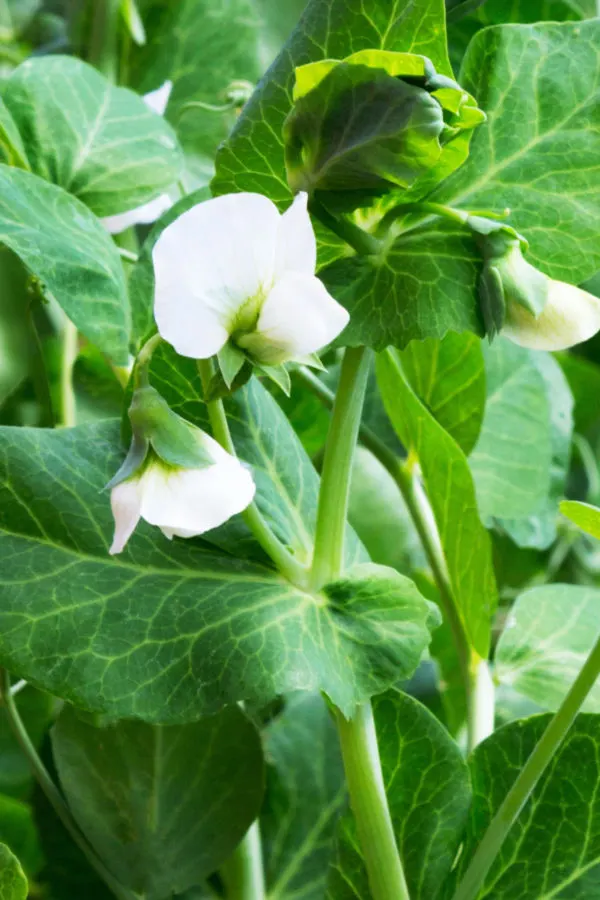
In the early spring, plant a crop of peas as a green manure crop to cover your raised bed soil. Not only will the peas protect your soil, they help to fix nitrogen back in as well! Simply let them grow for about four weeks, then cut them to the soil line to kill them off, or turn them over into the dirt with a spade.
For fall cover crops, oats and annual rye are great choices for raised beds. They sprout quickly, helping to protect your soil over the winter by keeping out weeds and stopping erosion. In the spring, you can simply cut it back to kill it off.
The nutrients decompose back into the soil and you are ready to plant into fertile soil! Here is to re-energizing and powering up your raised bed soil! Once the gardening season is over in the fall, be sure to check out our tips and tricks for getting your raised beds ready for winter How To Get Raised Beds Ready For Winter – Power Up & Protect Your Soil This Fall!
Happy Gardening – Jim and Mary.
Jim and Mary Competti have been writing gardening, DIY and recipe articles and books for over 15 years from their 46 acre Ohio farm. The two are frequent speakers on all things gardening and love to travel in their spare time.
As always, feel free to email us at thefarm@owgarden.com with comments, questions, or to simply say hello! You can sign up for our free email list in the subscribe now box in the middle of this article. Follow us on Facebook here : OWG Facebook. This article may contain affiliate links.
